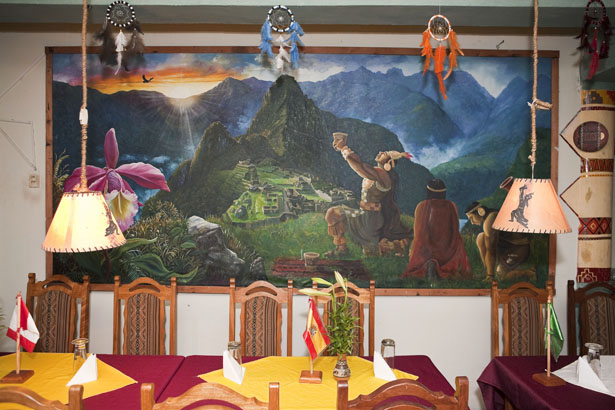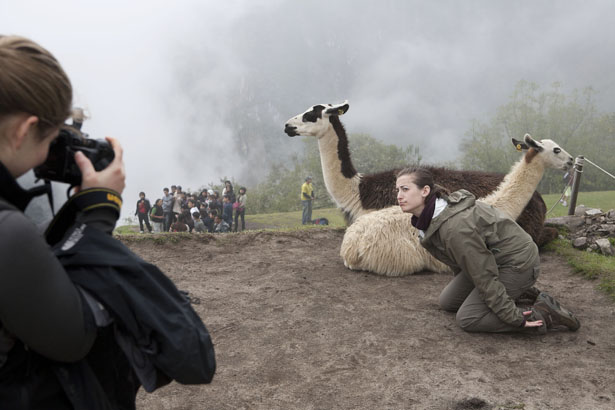Machu Picchu
For many years I have been photographing some of the great tourist locations of the world, from the Pyramids through to the Taj Mahal. The bigger the honey pot the happier I am, as the expectation – as opposed to the reality – is always a good starting point for my photographic explorations. One place has always eluded me, but finally I managed to get to Machu Picchu, situated high in the Andes in Peru.
Whenever we contemplate that iconic image of this remarkably situated lost city, one thing is certain: there are no people around. I wanted to see what was actually happening at Machu Pichu, knowing how popular it had become.
Is it really as deserted as the images suggest?
Machu Picchu is not easy to get to, unlike most iconic sites in the world where a short ride from the airport will land you at the entrance gate. First you have to fly from Lima to Cuzco, and then take a four hour train journey to Aguas Calientes. There is no choice about this as it is impossible to make your way by car. Then you have to get on the local service bus and zig-zag your way up the steep mountainside to the entrance.
When you arrive at an airport early in the morning, you are never first there and you wonder where everyone comes from. The same applies with Machu Picchu. I was there at 7.30am, thinking I would familiarise myself with the site, before the rush. Already the place was packed.
However there was a problem, the view that I had travelled half way round the world to see was shrouded in mist. I suddenly thought that this might linger for the next two days and I started to panic, thinking I may not see the site at all.
I was not alone in this fear, as this is where the famous Inca Trail finishes. Those arriving in after a gruelling four day hike were devastated not to be able to see and photograph the view. However, within an hour the mist thinned and glimpses of the most famous prospect in South America started to emerge. Indeed this slow revelation was more dramatic and impressive than the unremittingly sunny scene the day after.
Between the hours of 10am and 2pm the site is at its busiest, with up to 4000 visitors arriving every day. Knowing how inaccessible this place is, it is staggering where and how they emerge. It is also not a cheap visit as each foreign tourist has to pay 122 soles (roughly $41) to enter the site. I am convinced that this entrance payment, together with the cost of the journey and the trekking are probably keeping the Peruvian economy afloat, as 70 % of all visitors are foreigners.
Aguas Calienties, the town at the base of the steep climb to Macchu Picchu has one purpose, and that is to supply board, lodging and food for the visitors to the site. All tastes and budgets are catered for, from expensive and luxurious hotels through to the numerous hostels for backpackers, as the appeal of Macchu Picchu is universal. Twenty years ago there was hardly anything there, but now the town is really buzzing, as in the last decade alone visitor numbers have trebled. There are no cars as the town is only accessible via the train. I photographed renditions of the view of Macchu Pichu as many restaurants, massage parlours, souvenir shops or whatever use this as decoration.
What is it that drives so many people to visit, sometimes with great difficulty, this remarkable place? It has an appeal that must go beyond the attraction of the usual honey pot. It is a glimpse of a lost world, hidden from man until discovered by Hiram Bingham in 1911. It is one of the most beautiful sights on earth and is potentially about to become a victim of its own success as visitors swarm over the walls and terraces. Get there soon, as there are rumours that they will have to build a replica before the real Macchu Picchu is trampled to death.
November, 2008.








Comments are closed.